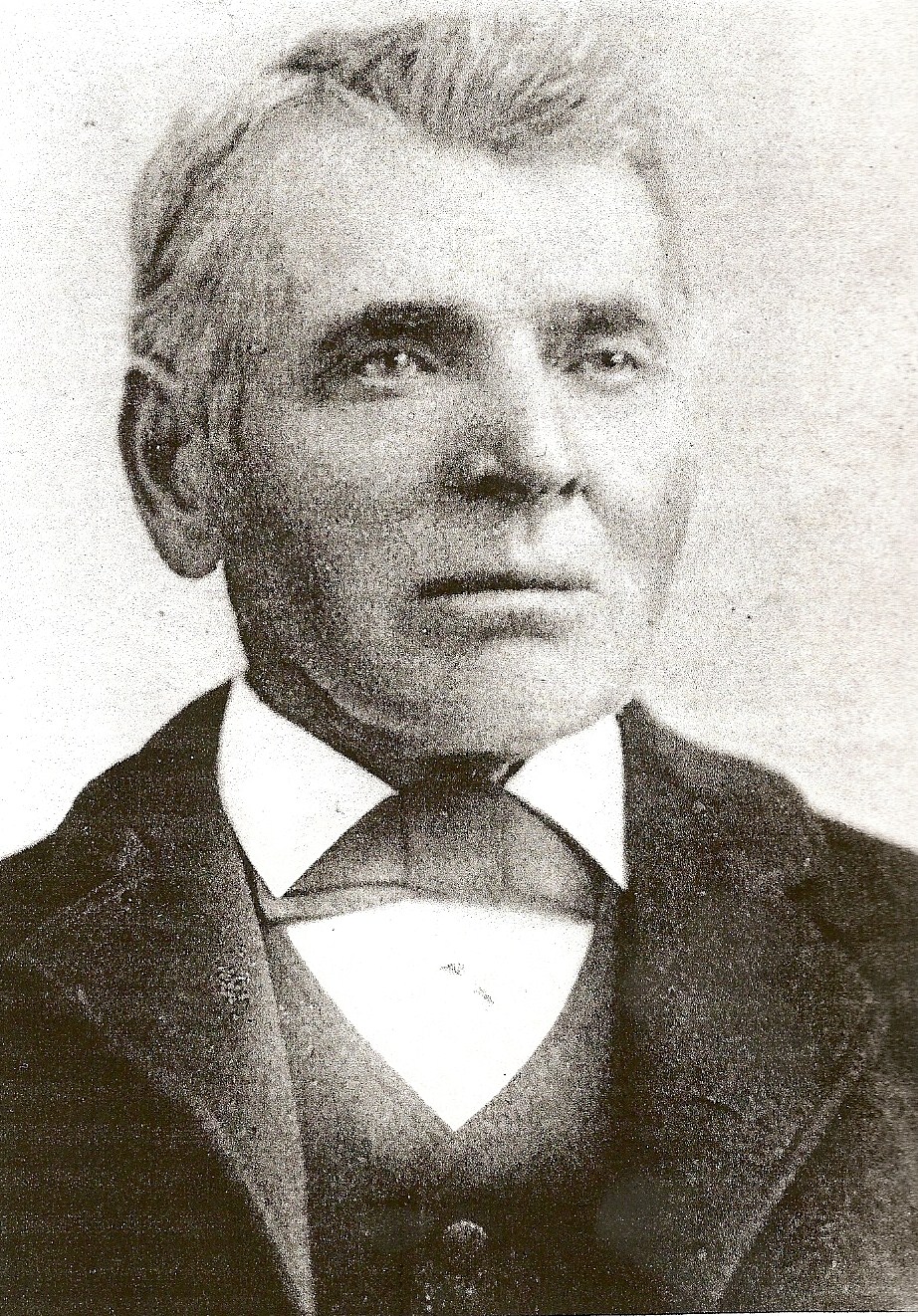The History of the Swarthout Family
Swartwout, Swartout and Swartwood
Swarthout in the Mormon Battalion
THE TRAIL OF THE SWARTHOUTS
This article and the associated pictures were provided and are used with
the permission of Terry Graham
Copyright 2004, Terry Graham
The historic records in the Wrightwood Museum, and many publications that deal with local history, share a common understatement when it came time to cover the beginnings of Clyde Ranch in Lone Pine Canyon; "Almon Clyde bought the ranch from a ‘settler’ for two hundred dollars in gold and eight head of cattle in 1863." The same comment could be seen on the Wrightwood Chamber of Commerce bulletin. It used to be on local history handouts that the realty or real estate, not capitalized offices passed out, and of course it is on the Wrightwood Historical Time-line in the Ol’ Fire House museum.
The man who sold the present day Clyde Ranch to Almon Clyde was named George Swarthout, and he was more than a simple "settler." The December 20, 1938 issue of The Sun (A San Bernardino newspaper), gave the following praise of this man and his brothers that came to the area with him, "Headed by three brothers, George W. Swarthout {and} the Swarthout family played an important part in the development of San Bernardino valley."
So, where did these folks come from? On the 11th of June, 1847, accompanied by Captain Jefferson Hunt's Mormon Battalion, the Mormons trek for Salt Lake started. They left Council Bluffs, Iowa; and after getting across the Elkhorn River, they started on their way westward. Prior to their arrival at Council Bluffs, the United States government had asked for 500 volunteers to fight in the war with Mexico (1846-1848), these volunteers, which included Nathan and Hamilton Swarthout, were recruited into the Mormon Battalion
The civilian wagon trains traveled up the north side of the Platt River in a company of 666 wagons which included Daniel Spencer’s group of 100 wagons. These wagons were divided into groups and addressed as such: Ira Eldredge’s 50, Jedediah M. Grant’s 50 and Erastus Bingham’s 10. The entire company was so large that it was organized with many captains to guarantee the best of order. In long columns they traveled, at two wagons abreast, making two roads. The wagon train literally stretched horizon to horizon.
Ira Eldredge's 50, which were a part of the Daniel Spencer Company, officially started their pioneer trek, with 76 wagons and 177 people. The captains were Isaac Haight, Hector Haight, Samuel Ensign, Erastus Bingham, and George Boyes. Included in the Daniel Spencer Company was a wagon group that was led by Farnum Kinyon. The following is a list of families that were included in this wagon group: John Adams, John Harris Henderson, Farnum Kinyon, George B. Kinyon, Hyrum Kinyon, Lucinda Kinyon, William H. Kinyon, Ann McMinds, Emily Ann McMinds, James McMinds, William McMinds, Elizabeth Meaks, Peggy J. Meaks, Pridy Meaks, Sarah Meaks, Louisa Norris, Betsy Persons, Carlos Shephard, Charity Shephard, Lydia Shephard, Samuel Shepherd, Charles Swarthout, George W. Swarthout, Horley (Harley) Swarthout, and Tramand (Truman) Swarthout.]
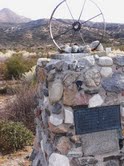 |
The wagon company divided near Laramie, Wyoming. The Battalion, under Captain Hunt’s command, headed for California. Ira Eldredge's group was one of those that continued on to Salt Lake and then subsequently headed for California. In that group was George W. Swarthout. After the Mormon Battalion was taken out of service in 1847, Captain Jefferson Hunt, of the Mormon Battalion, led another group of settlers into San Bernardino 1848. The Mormon Road stretched from Salt Lake across the Mojave Desert and down through Cajon Pass.
Photo looking northeast past the Mormon Monument on present day Hwy 138, you can still see markings where the wagon company made their cut. The Mormon Monument which was erected by Sons of Mormon Pioneers on May 15, 1937 was in memory of a group of 500 Mormons settlers that took the same route in 1851. |
The Mormon battalion had survived the harsh desert, only to find themselves in a place full of boxed canyons-and face to face with a narrow draw that was impossible to navigate their wagons through. The only way through the draw with the Battalion’s troops and remaining five wagons, was to hewn the hard rock walls with axes to increase the opening. To reach the promise land, they first had to move a piece of mountain-perhaps a little faith was applied, but it was very difficult physical work that got it done. Men hacked at the solid rock throughout the day. The back-breaking work expanded the narrow gap, but it was still too narrow for wagons to pass through. Already pushed to the physical breaking point by the very difficult trek across the Mojave, the men tossed their axes aside and began to take the wagons apart, piece by piece. In his diary, Sgt. G. Cooke stated that the Battalion named this place as Box Canyon, and not with affection. The location of the narrow gap was in the northwest area of what is now known as Cajon Pass.The wagons were later reassembled on the valley floor, and they passed through small valley just northwest of a group slanting rock formations that are referred to today as the Mormon Rocks.
Photo 2 - closer photo of markings, which is located northeast of Sayles Road and north of Highway 138 in West Cajon valley. Out of sight and further up the northeast canyon, wagon scuff marks can still be seen.
(Photo 3)-The small valley that the Mormons crossed to entry Cajon Pass was north of present day Highway 138 and west of the old Turkey Ranch in West Cajon valley.
According to Wrightwood History, and the History of the San Gabriel, written by John Robinson, the Mormon Colony purchased the San Bernardino Rancho from the Lugos in 1851. Two of these Mormons, Nathan and Truman Swarthout, homesteaded in Lone Pine Canyon. Shortly, they expanded their land holdings to include the valley that now bears their name.
The Swarthouts abandoned their holdings when the Mormons returned to Salt Lake City in 1857. Robinson’s account was verified by other sources. The December 20, 1988 special issue of San Bernardino Sun Telegram, "Cover Wagons Families,” stated that the Swarthout Ranch holdings in Lone Pine Canyon were abandoned was due to Indian problems and bear menace. Despite the obvious influence and contribution of this amazing family in the San Bernardino, Cajon Pass and Wrightwood area, there is some confusion in previously written local history.
In reality, it was George Swarthout who settled in Lone Pine Canyon and claimed a vast area that extended from present day lower Swarthout Valley, near the Cajon Pass, to the Big Rock Creek area in what is called today Valyermo. Valyermo is approximately 19 miles west of the mountain community of Wrightwood, California. This great expansion of land was what Swarthout called a "cattle claim," and he settled in the area in 1847. It had been speculated that the cattle on this land holding came from the vast number of cows that populated the San Bernardino Valley and was made available when the Lugo cattle ranch was purchased by the Mormons. The Swarthout Ranch holdings in Lone Pine Canyon were not abandoned due to Indian problems and bear menace; Almon Clyde purchased the land from George Swarthout around 1853. Clyde and nearby Glen Oaks Ranch communicated back and forth using mirrors to alert each other of Indian problems. As for the bears in the area, which included black bear and grizzly, the biggest thing to worry about were the bandits and Indian raiding parties in the area. These riffraff easily outnumbered the bear population, and they were a bit more dangerous.
The Swarthouts were just getting started in the San Bernardino area, and what an interesting family it was; we start with Truman Swarthout.
TRUMAN SWARTHOUT
Truman Swarthout remains somewhat of a mystery. Even though local history recorded that he and brother Nathan were part of the Mormon Battalion, there is no record of Truman being with the Mormon Battalion. Local history further recorded that Truman Swarthout homesteaded near present day Wrightwood. The truth was, Truman came to California as the part of the Daniel Spencer Company wagon group, and did not homestead the Lone Pine Canyon (present day Clyde Ranch near Wrightwood, California), but continued on to present day San Bernardino, where he owned a cattle ranch in the San Bernardino Valley. Assigned to Company A, under the command of Captain Jefferson Hunt, was a private Hamilton Swarthout. Assigned to Company D, under the command of Captain Nelson Higgins, was Private Nathan Swarthout. Truman Swarthout, along with others, lived in the Fort San Bernardino/ Mormon Stockade for almost a year. Even though Truman Swarthout was listed on San Bernardino property assessment rolls in 1857, at Rancho San Bernardino, there was no other record of Truman in San Bernardino after that. It is speculated that Truman Swarthout returned to Utah with the rest of the Saints. In 1864, he lived in Provo, Utah.
WHAT WAS THE MORMON STOCKADE?
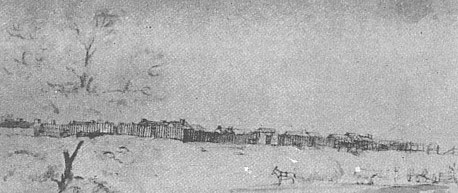
(Photo 4)-Fort San Bernardino was sketched in 1852 by William R. Hutton.
In June of 1851, the Mormon newcomers in San Bernardino were alerted of Indian skirmishes and raiding dangers in the area. In the center of their new mile-square town of San Bernardino, the leaders set aside eight acres and fenced in a parallelogram. 300 feet wide by 720 feet. Twelve foot high walls protected three of the sides. The fourth side was a series of log buildings jammed close together. All exterior walls were loop-holed and the gateways were indented to allow for crossfire. Ranger Horace Bell, In his book Reminisces of a Ranger, described the structure as "a stockade about a quarter of a mile square with two great gates leading into it. Inside they placed their dwellings, shops and stores. Every night the gates were barred and a sentry kept vigilant watch from the walls against surprise." The Mormons stayed in the stockade for approximately nine months, the anticipated war with the Mojave Indians never occurred. It was in October of 1857, when Brigham Young called the "saints" to "Zion".
On December 27, 1858, when United States Colonel William Hoffman's "Mojave Expedition" camped near the original Cajon, they learned that approximately 1,000 had stayed in the area of San Bernardino. Ironically, historian Horace Bell described all those living in the Mormon Stockade, thus: "I was benefited by my contact with these serious, rugged people. They set good examples for youth. There were no gamblers tolerated in San Bernardino, no rum sellers, no loud characters offering vice for sale. There were no drones there. Persistent industry, intensive husbandry were the impressive features of life there." "Now, the Church declares those who choose to stay behind as "men, (in San Bernardino) their character is such that he could not be tolerated in Utah" (As reported by Major General, James H. Carleton)
A group of over a hundred Mormon Battalion veterans entered Salt Lake Valley in late September-early October 1847. These battalion men had been discharged in Los Angeles on July 16, 1847. (Both Hamilton and Nathan Swarthout were mustered out with their company July 16, 1847 at Los Angeles, California) No longer under military order, the men formed into hundreds, fifties, and tens, under the leadership of Levi Hancock. There were 223 men in this group. They traveled through California’s central valleys, past Sutter’s Fort, into the Sierra Nevada. When they were near Donner Summit, they met James Brown with a letter from church authorities telling the men about the destitute situation in the valley and recommending that they return to California and "work a season." Several diaries of these men contain the notation that "about half went on and half went back" to work for Captain John Sutter at Sutter’s Fort. The Hancock Company went directly to Salt Lake Valley in 1847. Nathan and Hamilton Swarthout were in the group of "half" that continued on with Levi Hancock to the Sutter’s Mill area after meeting James Brown in the Sierra. Records had revealed that Nathan Swarthout returned to the San Bernardino area by 1850, and Hamilton Swarthout lived in Monterey, California in 1850 and died in San Bernardino, California March 16, 1894.
MORMON BAR, THE SWARTHOUT’S NEXT STOP
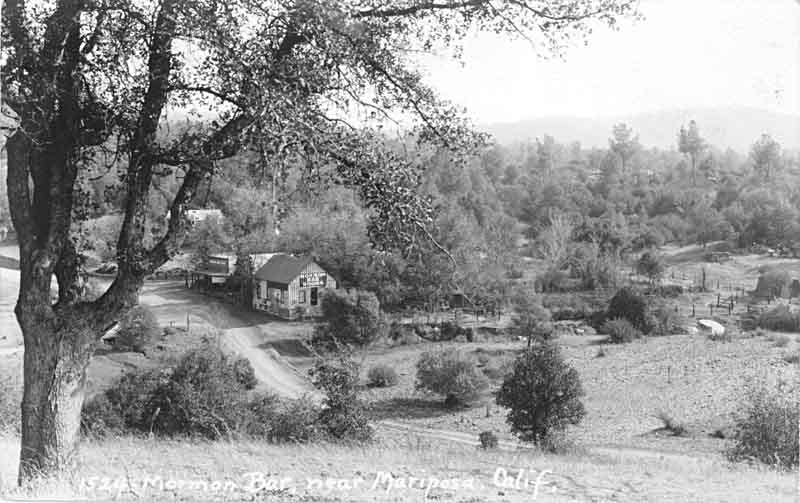
(Photo 5)-Courtesy of Mariposa County Library
Mormon Bar was founded in 1854, during the gold rush in Sutter’s Mill. Even though it was not considered to be in the area of the mother lode, it was known to be the southern terminus of the Mother Lode. Even after 150 years, a large number of the original buildings still stand. The semi- ghost town is just south of Mariposa. Mormon Bar was first mined in 1849 specifically by members of the disbanded Mormon Battalion;(thus the reason for it’s name) two miles south of Mariposa, California, on an old stage route to Wawona and Yosemite. As of 2001, the place known as Mormon Bar was put on the market, most of the mining equipment and evidence of the quarry has been removed. This is the mining area in which the Swarthouts (Nathan and Hamilton) were for a short time, prior to returning to San Bernardino. Even though there is no record of claims, it was the Levis Hancock Company who worked the claim. It was this company that Nathan and Hamilton Swarthout had been assigned to being ordered to "work for a season’ instead of returning to Utah with the rest of the saints.
What destroyed the dreams of many Battalion members at Mormon Bar was a big mouth named Sam Brannan. Brannan was a Mormon elder who had brought a boatload of Saints around the Horn to San Francisco in 1847 to scout for a modern "Mormon Eden" amongst the Mexicans in California. He traveled to Mormon's Bar (after receiving word of the mining going on in the area) to find his fellow churchmen eagerly mining gold from the American River. "Reminding" them he was the surrogate of the prophet Brigham Young in Salt Lake City, he "relieved" them of 30 percent of their gold as church tithes.
It’s fair to say that the gold Branner seized never saw a collection plate. He used it for his own enterprising ideas. With gold in hand, he set up stores at Coloma and Mormon's Bar to go with the one he rented at Sutter's Fort. Then he cornered the market in mining equipment, buying every pick, shovel, pot, and pan he could find in the territory in the process. Hungry for more business, he took a genuine bottle full of Mormon gold dust, rushed back to San Francisco and dashed through the streets of Portsmouth Square shouting: "Gold! Gold! Gold from the American River." The gold rush that the newspapers had failed to generate, was kicked started by Branner’s big mouth. It would be called the Gold Rush of 1848, and the Argonauts who responded to Brannan's siren call of El Dorado would be known as the "48ers."
History would later report that the gold discovery in Mormon Bar was minimal in the beginning, and most of that went into Elder Brannan’s pocket. The Mormons were quickly replaced, approximately after one year, by other miners, including a large number of Chinese. Suddenly, Mormon Bar turned into a mother lode. The diggings were reported to have yielded about $2 million and were active through the 1870s, and again in the 1930s! An historic marker is at the site, located 500’ southeast of the intersection of SH 49/Ben Hur Road, 1.8 miles south of Mariposa. The Mormon Bar was also called Mormon Island. At least one Swarthout returned to the San Bernardino Valley after the gold mining venture of the Mormon Bar, that was Nathan Swarthout.
|
(Photo 6)-San Bernardino pioneer Nathan Swarthout |
The Swarthout clan remained strong and influential in the San Bernardino area. Four Swarthout ranches were reported to be in the San Bernardino area and Cajon Pass (From the Sun Newspaper; Nov. 11, 1963 issue; "The ranches extended from Little Mountain, south to Baseline from E Street and west beyond I Street." They belonged to George W., Nathan, and Albert "Swarty", and Harley Swarthout. There were four Swarthout brands: The first was George’s "2S" at present day Clyde Ranch. (The "S" was backward in the brand). The last one registered was registered by Al "Swarty" Swarthout of the famous Heart Bar Ranch, this was the Box S (a box with the letter S inside) NATHAN SWARTHOUT Nathan Swarthout’s contribution to the area of Cajon and San Bernardino was great. Nathan Swarthout, considered to be one of the oldest pioneers of San Bernardino County died of natural causes at his home on G Street, north of Base Line, on January 10, 1903. Swarthout was part of the Mormon Battalion that came to the Cajon Pass and San Bernardino area; he was a private in Company D, which was under the command of Captain Nelson Higgins. A member of the San Bernardino Society of Pioneers, he was very prominent in the early development of San Bernardino. The need for structures and fence post for the early ranchos of the areas caused Swarthout to take charge of work crews to cut cedar trees in the area of Saw Pit Canyon. During this large undertaking, he constructed the Bailey Canyon road in the Sierra Madre area that connected to the Bandini Road, which opened what once used to be a huge timber area. In doing so, the large amount of valuable timber assisted greatly in the building up of San Bernardino. Nathan Swarthout was buried Monday, January 12, 1903, in the San Bernardino Cemetery by Rev. D. Mc. Gandler, pastor of the First Presbyterian Church. One of his pallbearers was William Holcomb, the miner whose discovery of gold in the Holcomb Valley that started San Bernardino’s biggest gold rush. (Summary from Nathan Swarthout Obituary, San Bernardino Sun, Jan 12, 1903) |
GEORGE WASHINGTON SWARTHOUT
 |
(Photo 7)-George W. and wife Elizabeth Brain Swarthout; San Bernardino pioneer, first settler of present day Clyde Ranch on Lone Pine Canyon Road. George Swarthout arrived in the San Bernardino area in 1847, as part of the Daniel Spencer Company wagon train group. George W. Swarthout reached the area later known as Swarthout Valley, where he ran scattered amount of cattle from the Swarthout Valley, now known as Wrightwood, over the ridge of Table Mountain and unto the Mohave desert floor to the outskirts of the Llano and Victorville. In 1857, Almon Clyde acquired the Swarthout Ranch on Lone Pine Canyon, where he ran a few cattle and grew fruit. Almon Clyde made an agreement with George Swarthout that he could life the rest of his life on Clyde Ranch if he wanted. He was true to his word, and George Swarthout lived in the place that he obviously loved. Swarthout lived in a line shack that he built when he developed his ranch. The line shack was approximately ¼ mile to the east and down canyon from the present day main house of Clyde Ranch. The cabin is no longer there, but if one would look hard enough, they might find its old foundation. There he lived, until he passed from this life. According to California death records, George W. Swarthout died in December 27, 1872. |
|
(Photo 8)-After leaving the West Cajon valley area, the Mormon wagon train took this old migrant trail that two decades later would be known as Brown Toll Gate, about ninety years after that, it was referred to as being part of historic Route 66- AL SWARTHOUT: THE SWARTHOUT CATTLE COMPANY - HEART BAR RANCH Over in the upper Santa Ana River headwaters (Big Bear area), cattle and sheep of Dr. Benjamin Barton and Matthew Lewis had grazed since the 1860s. It was there in 1884 that Charles Martin and Willie Button created the Heart Bar Ranch and registered that brand. Twenty-three years later, thirty-five year old Albert "Swarty" Swarthout would acquire that ranch. An association began with the notorious McHaney Gang, who were reputed to be outright rustlers — soon became the undoing of Martin and Button. Charlie Martin, also known as Glen Martin, was a convicted thief and cattle rustler. Through the relationship with the outlaw McHaney gang, he later was a defendant in a famous murder trial. He survived a vicious knife attack from an altercation in a local bar by shooting his attacker. The killing was deemed justified. He eventually tried to go straight and was appointed San Bernardino Chief of Police in 1917. The only mention of Al Swarthout in the area was in the historical archives in San Bernardino, Victorville and Lucerne Valley. In 1896, Swarthout bought land from W.W. Brown in Lucerne Valley, where he quickly formed the Bar S and begin running cattle. Swarthout move to Old Woman Springs in 1897 when water and feed became scarce. Old Woman Springs, now known as Cottonwood Springs, became part of the Heart Bar Ranch after Al Swarthout acquired it. In 1907 Albert "Swarty" Swarthout and partner Charlie Martin, purchased Heart Bar Ranch, south of Big Bear for summer graze. By 1918, both had sold out, and in 1921 Swarthout again bought the Heart Bar. This time his partner was San Bernardino businessman Dale Gentry. Their cattle were driven to Heart Bar Ranch via Rattlesnake Canyon in the spring, and returning them to Old Woman Springs Ranch in the fall. Prior to obtaining Heart Bar Ranch, AL Swarthout moved the Bar S from Lucerne Valley to the Old Woman springs area. Due to drought in the lower valleys, Swarthout was forced to run scattered amount of beeves in Big Bear's high country near Coxey Meadows. Winter graze was on the land around Old Woman Springs in Lucerne Valley. The partnership in the Heart bar Ranch was perfect with Swarthout raising the cattle and Dale Gentry handling the business end. However, in 1938, they decided to split up. They could not agree on one selling to the other a half interest in Heart Bar and the Old Woman Springs Ranch they had acquired. After nine years of court proceedings in 1947, Swarthout got Heart Bar and Gentry, Old Woman Springs. |
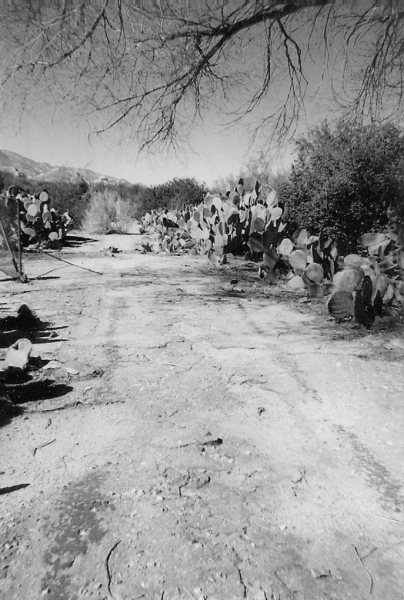 |
Around 1947, one hundred years after the Swarthouts appeared on scene, the intrusion of resorts and residential developments were gradually bringing an end to the cattle business. The decline began when the creation of the lakes at Arrowhead, Green Valley and Big Bear had taken away choice grazing land. Later, improved roadways and mode of transportation brought increasing numbers of visitors into mountain country that had once been open range land. The inevitable finally arrived, cattle ranching and modern life-styles became absolutely incompatible and the final herd came down from the mountains.
The ranches that faded from time was Al Swarthout's Heart Bar Ranch, Hitchcock Ranch, Shay Ranch (bought out by the Talmadges, the main operation moved to Joshua Tree National Park), the IS ranch (also later owned by the Talmadges. It actually stayed in operation until 1954). Prior to the slow death of Al Swarthout’s Heart Bar Ranch and the Swarthout Cattle Company, the ranch operations reached from the Lucerne Valley, to the west slope of the San Bernardino hills to The Oasis of Mara, which is located near the present day Joshua Tree National Park. The Oasis was first settled by the Serrano Indian who called it "Mara", meaning "the place of little springs and much grass."
In the early years, the desert was open range and cattlemen moved their animals seasonally from one area to another in search of adequate food and water. The cow puncher life was explained in a simple way by an old Swarthout Cattle Company hired hand named Jim Hester; "In those days, if you were a cowpuncher, you had a pair of chaps, a horse and a pack horse, a bedroll, salt, staples, a six-shooter, and a big chew of tobacco."

(Photo 9)-Photo "Old Time cattlemen of Big Bear country at a 1937 Moonridge gathering; they are left to right-Cliff Shay, Dale Gentry, Harry Allison (county clerk) Al Swarthout, John Cram, John and Will Talmadge, Will Shay and Sheriff Emmett Shay."- From Foxfire, 100 years of Cow Ranching in the San Bernardino Mts/Mojave Desert, by Kendall Stone; 1989 Sagebrush Publishing.
Al "Swarty"Swarthout was well liked and deeply respected by the other ranchers in the Big Bear area. Kenadll Stone, in his book Foxsong: 100 Years of Cow Ranching in the San Bernardino Mts./ Mojave Desert, remember "Swarty" this way: "Swarty, a small man physically, ran the toughest ranch of the four and made up for his size by having and using what was obviously a high IQ." Swarty raised American saddle bred horses, they were good mountain cow horses. Their speed and athletic ability made them tops.
It is unknown when exactly Al Swarthout came to the Lucerne Valley, Bear Valley area. Knowledge of the area, and the ability to use the beneficial attributes of the land for a thriving cattle ranch, was obviously passed to him by Uncle Nathan Swarthout, the brother of George Swarthout, who was the original settler of present day Clyde Ranch in Lone Pine Canyon.
Al "Swarty" was ten months old when his father (George Swarthout) died, living him to be raised by the surviving Swarthout clan in San Bernardino. Al Swarthout, who was born February 11, 1872, died at the age of 91 in 1963.
The Swarthouts...just plain ol’ settlers? Not on your life!
